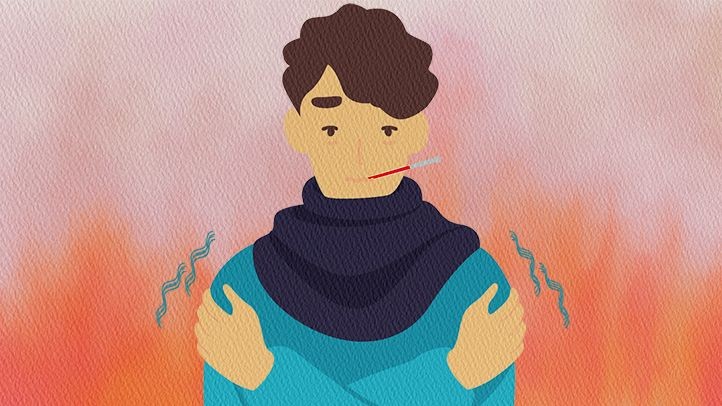 A woman feeling cold while having a fever.
A woman feeling cold while having a fever.
Feeling cold when you have a fever, also known as having the chills, is a common experience. This seemingly paradoxical sensation is actually a normal physiological response to your body fighting off infection. This article will explore the science behind why you get cold when you have a fever.
How Fevers Fight Infection
Our bodies maintain a core temperature around 98.6 degrees Fahrenheit (37 degrees Celsius). Most bacteria and viruses thrive at this temperature. When an infection sets in, your immune system triggers a fever to create an environment less hospitable to these invaders. Even a slight increase in temperature can significantly hinder the replication of many microorganisms.
The Mechanism of Chills
When your brain detects an infection, it raises your body’s internal thermostat. This higher set point signals the body to generate more heat to reach the new target temperature. Because your body temperature is now below this new target, you feel cold despite having a fever. This sensation triggers shivering, a rapid muscle contraction that generates heat and helps raise your body temperature. Dr. Amesh Adalja, a senior scholar at the Johns Hopkins Center for Health Security, explains that this process is “part of our immune system’s response against infection.”
Duration of Fever and Chills
The duration of a fever and chills varies depending on the underlying cause. Dr. Nate Favini, a primary care specialist, notes that shivering is the body’s way “to generate heat to raise your temperature.” Mild viral infections might cause a fever for a day or two, while more serious infections can result in fevers lasting for weeks or even months. Common illnesses associated with fever and chills include colds, the flu, bronchitis, pneumonia, and various bacterial infections. Other causes can include inflammatory conditions like lupus and rheumatoid arthritis.
Managing Fever and Chills
For fevers between 100 and 102 degrees Fahrenheit, rest and hydration are crucial. While you might feel cold, avoid bundling up in heavy blankets as this can trap heat and lead to overheating. Use light clothing and bedding to allow your body to regulate its temperature effectively.
When to Seek Medical Attention
Consult a doctor if your fever reaches 103 degrees Fahrenheit or lasts more than 48 hours. Also, seek immediate medical attention if you experience severe headaches, stiff neck, confusion, difficulty breathing, rapid heart rate, or any other unusual symptoms.
Medication for Fever
While fever plays a vital role in fighting infection, over-the-counter medications like acetaminophen (Tylenol) or ibuprofen (Advil) can help alleviate discomfort. Follow dosage instructions carefully and avoid exceeding the recommended dose. Be mindful of taking multiple medications containing acetaminophen, as excessive intake can damage the liver. The Mayo Clinic often advises allowing a fever to run its course in otherwise healthy adults as it is a natural defense mechanism.
Conclusion
Feeling cold when you have a fever is a natural consequence of your body’s defense mechanisms working to combat infection. By understanding the underlying process, you can better manage your symptoms and know when to seek medical attention. While usually a sign of a common illness, it’s important to monitor your fever and associated symptoms and consult with a healthcare professional if you have any concerns.
